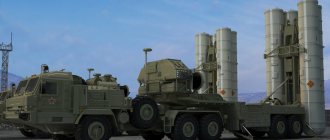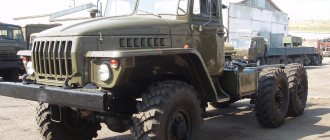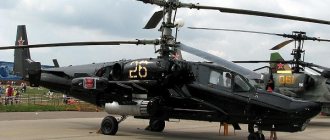Conversion of ZIL and GAZ to D245 diesel engine
Our company specializes in converting ZIL GAZ to diesel fuel.
Compared to standard gasoline engines, D-245 engines have lower specific fuel consumption. To convert ZIL and GAZ to diesel, engines of the D245 family are used, which were developed at the Minsk Motor Plant. The designers managed to improve the engine in such a way that fuel consumption was halved compared to a conventional gasoline engine. The engine can be operated at air temperatures from -45 to 40 degrees Celsius. For operation in extreme cold, which is typical for Russia, a special engine and fuel heating system is used. If you want to convert a ZIL engine to a D 245, please contact our company. Our specialists will carry out high-quality conversion of ZIL to D245 in a very short time at the location of your car. For conversion, kits manufactured at the factory are used in accordance with the technical documentation. Only components of excellent quality are used. We have a large range of spare parts for diesel engines type D-245.
If you decide to order the conversion of ZIL GAZ to diesel fuel, then you will also receive a set of all the necessary documents to legalize the engine replacement, which are included in the cost of the work.
In addition, the converted ZIL engine for the D 245 is considered not difficult to repair and maintain.
After re-equipping your car, you receive a guarantee from our company and the right to scheduled maintenance of the car. When the warranty ends, we will store a map of your engine and you can contact us for post-warranty repairs.
Advantages and disadvantages
The history of the ZIL-133G40 indicates that the vehicle has a number of positive qualities. These include cost-effectiveness of operation. Repairing a truck does not require significant costs, including replacing parts and components. Purchasing components will not be difficult, since they are divided into separate subgroups. In addition, the advantages include ease of maintenance, good cross-country ability and load capacity.
Despite all the advantages, the car has its drawbacks. It does not behave very confidently on completely off-road and snowy areas. Among the disadvantages, poor noise insulation of the interior and the quality of processing of the external parts of the vehicle are also noted. Despite all the features, the ZIL-133G40 truck has proven itself to be a reliable and faithful assistant in various industries, capable of performing clearly defined tasks in any climatic regions.
Source
Types of transport
Based on the machine, not only the ZIL-133 crane was developed, but also many other modifications:
- B - Chassis with a shortened wheelbase. Did not enter mass production;
- B is a truck tractor, which is produced in small series;
- G - a modernized version of the long-wheelbase 133 model, which received one fuel tank and two side walls;
- G1 - received two fuel tanks and three side walls;
- G2 - the carrying capacity of the basic version is increased from 8 to 10 tons;
- D - dump truck chassis with a short wheelbase;
- D1 - modification D, simplified in design;
- 144N - option for use in agriculture with single-pitch arched tires;
- Zil-133 GYA - gasoline engine adapted for the use of diesel fuel;
- VYA - dump truck chassis with a short wheelbase, adapted for diesel;
- E133VYAT - the power unit is supplemented with turbocharging;
- G40 is an improved version of GY. The main change is the installation of a cabin from the 4331 complex and a ZIL-6454 power plant;
- G42 - chassis for installation of crane equipment with cabin 4331 and ZIL-6454 engine;
- D42 - dump truck chassis with cab 4331 and ZIL-645 engine;
- 13305A - truck tractor with a 4331 cab of increased length and a ZIL-6454 power unit;
- 133G50 - an improved version of the G2, the cabin was replaced with a 4331, and the engine with a ZIL-508 carburetor type;
- 133D2 - dump truck chassis, equipped with a 4331 cab and a ZIL-508 carburetor engine;
- 451400 — a new NefAZ body was installed;
- 630900 - a modernized G40 model, which received a new YaMZ-236A power plant;
- 640900 - truck tractor with YaMZ-236A power unit;
- 6309N0 - an improved version of 630900, the motor is optimized for Euro-2 environmental standards;
- 6309N2 - chassis for mounting a crane with a Euro-2 engine;
- 45222 — dump truck chassis with Euro-2 engine;
- 630980 - an improved modification of 6309N0 with a ZIL-433180 cab, the engine is adapted to Euro-3 environmental standards.
The wide variety of tractor types is explained by minor improvements in design and some technical components. Most modifications either did not reach serial production or were released in small batches. Special-purpose vehicles have also been developed: fire tanks and ladders, concrete mixers, vans, cash-in-transit vehicles and much more.
Purpose and functions
First of all, construction equipment moves well off-road and overcomes difficult terrain. The ZIL 130 truck crane was especially often used to transport heavy loads in bad weather, when ordinary vehicles could not complete the assigned tasks. All vehicles on which the truck crane is based are equipped with an eight-cylinder engine with a power of 110 hp. depending on the model.
One of the main advantages of the unit is its adaptation to Russian realities, thanks to which the vehicle easily maneuvers between construction structures and moves comfortably on roads. The purpose of KS cranes is actually much broader and it is used not only in the construction industry, but also, for example, by fire services. Today, the Ministry of Emergency Situations of some countries continues to operate Soviet units, noting their endurance and efficiency.
The truck crane operates effectively at low temperatures
Comparing the KS-2571 with other similar models of that time, it is worth noting its high load capacity, which is six tons. No medium-duty truck could boast similar productivity results, being inferior to the unit, both in power and in other characteristics.
An important advantage of the truck crane is all the basic capabilities of the ZIL 130, which are further expanded thanks to special installations. That is, when buying a crane, you simultaneously receive a high-quality truck designed for use in various fields.
As for the scope of application, the KS series can be used in urban environments and in remote, hard-to-reach areas. The truck crane is easy to repair and does not require constant maintenance, and if handled correctly it will last for decades.
Likhachev Plant: the history of the creation and production of a car
The ZIL-133GYA model was produced from 1979 to 1992, the general designer of the family was Mikhail Vasilyevich Kashlakov. The vehicle was created on the basis of the ZIL-130 as an off-road vehicle. One of the main customers was the USSR Ministry of Defense, and a national economic modification was also being developed in parallel.
The first prototypes of the car were built in 1970, after which work was carried out on fine-tuning and preparation for the launch of mass production. During this period, the production of new mechanisms and units was mastered, and at the same time the production of the ZIL-133G1 car with an engine and gearbox from the ZIL-130 model began. The machine showed excellent results during testing and subsequent operation, which gave impetus to the further development of the series.
general information
The initial development of the vehicle had the status of a prototype, so mass production could not be established. In the first half of the 80s of the last century, a small series of trucks was produced. In subsequent years, the version was modernized and adapted to the harsh conditions of Russian off-road conditions. Ultimately, the vehicle received an extended base and body, and efforts were directed toward developing the specialized vehicle market.
The most popular modification was the ZIL-133 truck crane. A KS-3575A truck crane was installed on the chassis. The lifting capacity of the equipment was 10 thousand kilograms. After the release of the first copies, positive reviews were received from consumers, the machine began to be in wide demand in the national economy. Vehicles that are in working condition serve on various construction sites these days. Depending on the superstructure, the boom length can be from 14.5 to 17 meters.
The tractor belongs to the class of flatbed trucks. The body is based on a wooden platform, and a metal frame gives it strength. Side and rear doors open for easy loading. An awning mounted on a metal base allows passengers to be transported in inclement weather.
The main characteristic is a powerful car with good handling, which allows you to transport cargo and passengers to hard-to-reach regions of the country. The main advantage is the ability to install specialized equipment. In versions of recent years of production, the side sides consist of three parts, each of which opens separately. During the release years, consumers could order the truck with or without an installed platform.
Cabin interior
The steering mechanism of the ZIL-130 was a screw with a special spherical nut plus a piston-rack. The hydraulic booster was built-in. The three-seater cabin is located immediately behind the engine. The seat is adjustable in length, height and backrest tilt. The main options in the cabin included a heater, a windshield wiper with two blades, and a glass washer. For the 60s, the cabin ergonomics are at the highest level. The instrument panel and functional instruments are located very conveniently for the driver.
The designers provided two ventilation hatches in the cabin roof. The radiator grille has become a memorable element. The cabin was made of solid metal and had three seats. The engineering staff did a great job, because the car was comfortable and was very different from many Soviet trucks. Drivers received improved conditions for performing their work.
It was much more comfortable to sit inside, because the changes also affected the width - it was increased by 1.2 meters when compared with the ZIL-164 model. Instruments and controls were optimally located in the spacious cabin. In addition, soft seats appeared - for the driver and for passengers (double). The driver's seat could now be adjusted in horizontal and vertical directions.
It was also possible to change the angle of the chair back and pillows. It was on the ZIL-130 that the hydraulic power steering wheel debuted. Thanks to this, not only the ease of driving the truck increased, but also its safety - if the front wheel broke, it was easier to keep the truck on the road.
Specifications
The tractor's high performance characteristics ensured its great popularity. The curb weight is 8.6 tons, and the load capacity reaches ten tons. It is possible to transport a trailer weighing no more than 11.5 tons. The maximum speed of the ZIL-133 is 85 km/h with acceleration to 60 km/h in five seconds. The power is enough to climb uphill with an inclination angle of up to 25 degrees.
Engine ZIL-133 - KamAZ-740.10. It develops acceptable power for this class, and fuel consumption puts it in the category of economical transport. The transmission is represented by a standard design: clutch and gearbox. Eight studs secure the disc wheels. The front suspension includes semi-elliptical springs, and the rear suspension includes spring-balance springs. The main brake system is of the drum type. The main parts of the steering mechanism are the piston-rack and the ball nut.
With the right approach to maintenance, the car will last for many years without requiring expensive repairs. It is enough to change small parts in a timely manner after their service life has expired. Even after the production of this model is completed, you can find the necessary parts in excellent condition in spare parts stores for special equipment. For the convenience of users, the components are divided into categories that relate to a particular element of the truck.
The new generation includes the ZIL-133 GYA airborne. Despite the complexity of the design and increased weight, it easily overcomes dirt roads and off-road conditions. Difficulty in movement arises in the spring and winter, when the dirt road is a “mud mess” or completely covered with snow. Temperature conditions do not limit the use of the machine: it shows stable operation at temperatures from -40 to +40 degrees Celsius.
The design of the ZIL-133 frame is practical - it is made of two spars, which are fastened together by cross members. High frame strength is achieved thanks to the first, fourth and fifth cross members. Each cross member performs certain functions:
- The first one carries the support of the power plant, wings and radiator lining;
- The second one includes a bracket and one of the intermediate supports of the cardan drive;
- The third one carries the frame spars;
- Fourth - both parts of the channel section;
- The fifth is intended for the towing device.
Dimensional characteristics:
- Length - 9 meters;
- Width - 2.5 meters;
- Height - 2.395 meters;
- Ground clearance - 25 centimeters.
The size of the vehicle determines good maneuverability not only in rural areas, but also in dense city traffic.
The rear suspension device is made according to the balancing type. This design solution is optimally suited for use in villages and villages. The first copies were produced with a three-speed transfer case. When the ZIL-133 went through the improvement process, the overall design was changed to simplify repairs in the field, and the transfer case received five gears.
The tractor cabin can accommodate three people - a driver and two passengers. The cabin was designed to provide comfortable working conditions and a good view of the road for the driver. The ventilation system is presented in the form of several hatches, which are responsible for supplying fresh air. The cabin fastenings are made of high-strength material, but their flaw lies in the factory assembly - they were poorly tightened. The windshield provides a good view of the road and roadsides, while the side mirrors allow you to monitor an area that is inaccessible to the driver’s direct view.
At an average speed of 60 km/h, fuel consumption is 36 liters per 100 kilometers. At one time, a truck with this indicator was classified as an economical vehicle. The six-liter engine develops up to 150 horsepower. Since the car belongs to the class of tractors, it is possible to attach a trailer. To expand functionality, the owner can transport many types of trailers.
Description and purpose
The KS 3575A is based on the automobile chassis of the ZIL-133 GYA truck, popular in the USSR, which is a modified version of the ZIL-130 model. The crane installation received technical innovations of that time, which laid the foundation for the further development of advanced domestic developments. The functionality of the KS 3575A includes changing the location of cargo. In fact, any truck crane has this capability. However, the model in question is positioned as a multi-purpose truck crane, designed to perform tasks of various sizes - for example, installation of metal structures, buildings, structures and other construction projects, as well as moving bulky technical equipment in a horizontal or vertical position. In addition, the truck crane of the same name can replace a manipulator and be in demand not only in logistics centers, but also when unloading, disassembling and removing rubble. Thus, the huge potential of the KS 3575A can be directed to performing tasks in the hottest spots where special forces of the Russian Ministry of Emergency Situations operate.
Truck crane KS 3575A for ZIL 133 GYA
KS 3575A is a truck crane mechanism of the previous generation, in demand during the Soviet era. It has a flexible and versatile design, adapted to the most demanding tasks, including today. Due to this, this device is still popular - largely due to its accessibility and maintainability, as well as high functionality. The great potential of the KS 3575A can be revealed in the professional field, including the economic, public utilities and construction industries. Despite the relatively outdated design, this truck crane has many advantages that were conceived by Soviet engineers for many years to come.
What kind of oil should I put in the gearbox?
The KrAZ-250 requires an oil change depending on the season. There are options for all-season use:
- MT-16P.
- TAP-15V.
- USsA.
- CIATIM-201.
- CIATIM-221.
- Fatty solid oil.
- Grease 158.
In winter, there is often a need for more advanced products:
- MS-G4.
- TC-10-0III.
- Spindle oil AU.
There are options designed specifically for use in summer:
- MS-20.
- Industrial oil 20 (spindle 3).
Electrical diagram
Electrical diagram of KrAZ
The electrical circuit of the KrAZ-250 consists of the following elements:
- Relay.
- Wire harnesses.
- Fuel heater.
- Motorized washer connected to the electrical network.
- Electric speedometer.
- Lamps.
- Bundles of wires.
- Wires suitable for equipment components.
- Wire connectors.
- Feedthrough capacitor KBP-F.
- Rechargeable battery without electrolyte.
- Radio receiver with antenna AR-105.
- Loudspeaker GRA-24.
- Electric windshield wiper.
- Ammeter.
- Sensors
- Switches.
- Pre-heater contactor.
- Holder for instrument lighting lamps.
- Pressure gauge.
- Electric motors.
- Switches for various elements.
- Control lamp block.
- Circuit breakers.
Cabin structure
The driver's cabin has several modifications and is selected in accordance with customer requirements. The all-metal cabin includes two passenger seats. This part of the base model is not much different from the interior of any car and consists of the following components:
KrAZ-250 cabin inside
- control devices;
- adjustable door and window mechanisms;
- heating system;
- ventilation system;
- sun visors;
- compartments for storing items (glove compartment and retaining net);
- windshield cleaning device;
- rear view mirrors.
Data about the processes associated with the activities of the crane are reflected on the control panel, which is also located in the driver’s cabin. The driver monitors pressure indicators, fuel level in the tank and coolant overheating.
Chassis and suspension elements
The frame of the car in question consists of a pair of stamped side members. They are connected to each other using special crossbars. The latter elements are very important in the overall behavior of the structure. Rigidity is guaranteed by the special structure of the joints. This is a rather important point, since the first part contains supports for the power unit and related parts, the third cross member contains side members, the fourth element is equipped with channel halves, and the fifth cross member is used to install a towing device.
The front wheels of the ZIL-133G40 have a dependent suspension unit with semi-elliptical longitudinal springs and telescopic shock absorbers. The analogue on the rear wheels consists of dependent balancers with reaction bars and springs. The frame design is a spar, stamped, welded configuration.
Features of the device and operation
KS-3575 is a universal truck crane that had no analogues in its price category by the standards of the 1960s. The unit is capable of carrying out installation and construction work using various devices, the reliability of which is at a high level. The equipment is also endowed with decent dynamic and acceleration characteristics. This feature allows the truck crane to quickly move from one point to another to perform loading and unloading operations in several places at once, if the need arises.
Two-section boom with a base length of 9.5 meters. In this position, you can appreciate the compact dimensions of the crane unit, which is already one of the smallest machines among medium-tonnage truck cranes. This ensures maneuverability and the ability to move in difficult conditions - not only off-road, but also in city traffic jams. If the head section is extended, the boom length increases to 15.5 meters, providing enormous capabilities when moving loads over long distances, as well as greater height. The telescopic boom is adjusted using a hydraulic cylinder.
Please note that this crane installation was installed on the chassis of many other trucks. In particular, it has proven itself well on the Kraz-250 truck (65101)
High demand and use in different models confirm the great potential and capabilities of this crane installation.
The working mechanism of the truck crane of the same name operates due to an individual hydraulic drive, which, in turn, operates due to an axial piston pump. The pump is located directly in the chassis of the vehicle chassis. The efficient and uninterrupted operation of the piston pump is supported by the torque transmitted by the power plant through the gearbox. The gear ratios in a manual transmission are selected to withstand heavy loads.
Hydraulic outriggers and suspension stabilizers are integral structural elements of the truck crane, which are complemented by an automatic distributor.
The KS-3575 truck crane provides the operator with the opportunity to work by combining several working movements, which allows several operations to be performed simultaneously. So, the working movements look like this:
- lifting and lowering loads, as well as rotating the turntable
- lifting and lowering the load, as well as extending/retracting the boom section
- raising or lowering the boom, as well as rotating the turntable
Multifunctional cabin with increased comfort. Inside there is not only a dashboard with ergonomically located levers and switches, but also an autonomous heater that will provide coziness and comfort during the winter season.
The crane installation is equipped with safety elements, among which we can highlight the OGB-3-P-3575 system, which is responsible for limiting the lifting capacity in case the permissible weight of the load being lifted using a telescopic boom is exceeded. In other words, overload protection will work.
Ability to work with or without outriggers.
Ability to work in a circular area and move loads located far from the vehicle chassis. Thanks to this, there is no need to move the chassis.
The average cost of a used KS-3575A truck crane on the Russian market is 250 thousand rubles.











